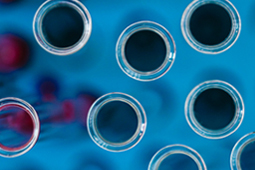-

Data Sciences
Increase Our Chance to Succeed Using Human Biology Data
Despite many successes in treating animal models of Alzheimer’s disease (AD), this hasn’t translated to humans. We believe that by guiding our drug discovery and development efforts using human biology data, we’ll increase our chance to succeed in developing novel therapies for patients.
Fully Understand the Genetics of AD
Over the last decade, the genetic architecture of late-onset AD has been extensively characterized, revealing immune genes, pathways and cell types (including microglia) that weren’t previously thought to play a major role in disease. We’re focusing our drug discovery efforts on understanding how to optimally target these pathways.
Collaborate With External Academic Labs and Consortia
Our group analyzes high-dimensional genetic and other human data, both internally and in collaboration with external groups. We then work closely with G2D2 biologists and chemists to incorporate those insights into experiments.
-

Discovery Sciences
Innovate Through Cutting-Edge Technology Platforms
AD human genetics reveal unconventional targets, frequently with minimal biological understanding or research history. Such targets frequently require the need to reactivate or enhance diminishing function in a disease state.
Novel therapeutics require a deep understanding of targets at a molecular level, and exploration of new therapeutic approaches.
To address these challenges, we build cutting-edge technology platforms combining structural biology, chemical biology, computational chemistry, novel assay development and compound screening automation.
Advance Science Through Collaboration
To deliver an innovative immunodementia drug to patients in an accelerated timeframe requires all talented minds to work together. We have established collaborations with leading laboratories around the world to accelerate the discovery process.
“We use cutting-edge innovations in chemical and structural biology, computational chemistry, and assay development to bridge biology and chemistry — all guided through the lens of human genetics.”
John Wang
Head, Discovery Sciences, G2D2 -

Precision Chemistry
Apply the Full Power of Organic Chemistry
Eisai’s rich history in natural products-based research has demonstrated that the areas of chemical space practically accessible to drug discovery are far greater than previously thought possible.
A Track Record in Chemical Innovation
Our scientists have discovered and developed several innovation solutions to complex drug discovery problems, including:
- The fully synthetic marine natural product-inspired therapeutic agent eribulin, consisting of a polycyclic ketal embedded in a 22-membered macro-cyclic ketone containing 19 stereo¬genic centers.
- Direct interrogation of genetic targets with stereodefined and topologically novel nucleic acids yielded an immunotherapeutic clinical candidate (E7766) and provides an example of our precision chemistry platform.
“Our platform applies targeted solutions — across a range of modalities — that are specific to genetically defined drug targets. The combined power of precision chemistry, data sciences and human genetics will be essential to develop breakthrough immunodementia thera¬peutics.”
Frank Fang
Deputy President & Head, Precision Chemistry, G2D2
Immunodementia
A novel, genetically validated target modulating immune mechanisms to treat dementia.
Choose the Right Target
Finding a disease risk-associated gene is just the first step in the drug development journey. We begin by understanding the connection between a risk or a protection-associated genetic variant and the underlying biology of disease.
The Immunodementia Biology group works closely with colleagues in Data Sciences to dissect risk variant effects on protein and cell functions, and to establish disease-relevant assays that reflect target activity. Working internally and with collaborators, we’re always trying to expand the biology around our targets.
Advance From Mechanism to Therapy
We apply an array of technologies to find and optimize molecules that will turn disease processes towards a more-healthy function. Following through, we analyze the effects of our candidate drugs in relevant in-vitro, in-vivo and ex-vivo systems, and explore molecular markers that will help us choose appropriate patient populations and assess drug effects in clinic. Unbiased ’omics’ approaches give us a comprehensive view of disease mechanisms and compound effects, while cutting-edge optical imaging provides critical mechanistic insights.